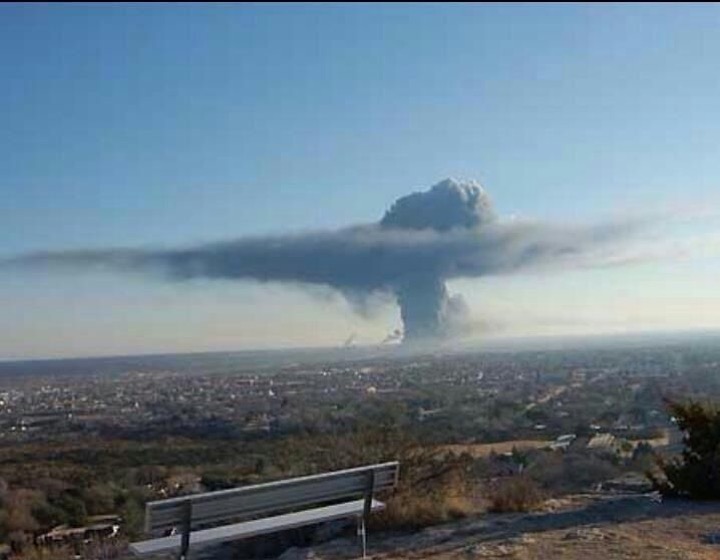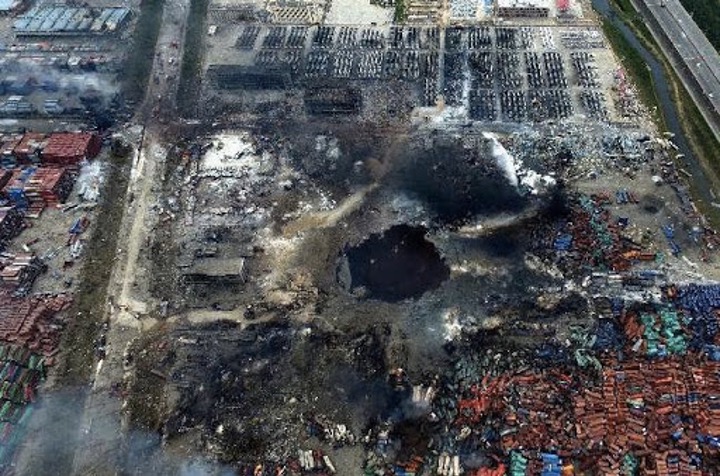Ammonium Nitrate: A History of Explosions
On August 4th, 2020, a widely felt explosion of a ship carrying farm fertilizer rocked Beirut, Lebanon, killing over 130 people and injuring thousands. It happened around 6:00 p.m. that Tuesday evening, and could have been avoided if port authority officials had simply listened to the warnings of a concerned expert six years ago.
Back in 2013, there was a Russian vessel on the way to Mozambique that had to suddenly stop in the port of Beirut because of some financial issues. According to CNN, the ship had over 2,750 tons of ammonium nitrate on it. And, even though Lebanon’s Director of Customs, Badri Daher, told port authority officials that letting it just sit there was the same as babysitting a stationary “floating bomb”, they didn’t do anything about it.
Daher knew way back then that the climate conditions in the area were not suitable and downright dangerous for that type of cargo, and could possibly result in a deadly catastrophe. The resulting explosion was so powerful that it could be felt about 150 miles away.
What Is Ammonium Nitrate?
An article in Scientific American that was written by Gabriel da Silva, a senior lecturer in Chemical Engineering at the University of Melbourne, says that ammonium nitrate cannot burn on its own, but can give off a very concentrated source of oxygen, which could possibly feed the flames of something that may be burning nearby. After the explosion in Beirut, it was found that a small fire was burning near the site where this horrible incident happened.

The site where the August 4th, 2020 Lebanon explosion occurred. Image from CNN.
Some scientists think that due to increased temperatures in the area, the agricultural fertilizer (which contained super-high levels of ammonium nitrate) began to break down on its own over time. Then, when it did, the dangerous gasses and water vapors that the chemical compound began to give off is likely what caused the deadly explosion.
Past Explosions That Involved Ammonium Nitrate
Incidents like this that involved ammonium nitrate have occurred overseas as well as within the United States multiple times over the years. Here are few of the most memorable explosions.

The West, Texas Fertilizer Plant Explosion. On April 17th, 2013, 15 people, including 12 firefighters and first responders were killed from an explosion at the Adair Grain and West Fertilizer Company. Some open flames near a big tank of ammonium nitrate is what caused the spontaneous blast, which could reportedly be felt and heard over 60 miles away. Three years later, the Bureau of Alcohol, Tobacco, Firearms and Explosives determined that the explosion was purposefully done, and offered a $50,000 reward for anyone who came forward with information that could lead to an arrest.

The Tianjin, China Factory Explosion. In August of 2015, over 170 people were killed (including 80 firefighters) from an explosion at a Tianjin factory in the Hebei Province. A chemical called nitro-cotton had self-ignited after workers had carelessly allowed it to dry out. Then, some nearby ammonium nitrate was initiated, which is what caused the explosion that left a huge crater in the ground at the site and around 300 nearby homes damaged or destroyed. According to reports, residents say it felt like an “atomic bomb” had hit, and the explosion had shot a fireball straight into the air resulting in flaming debris to rain down. Over 120 people were charged with causing the incident, one where 8 bodies were never found.

Scene at the Texas City Disaster Explosion. Image from The Galveston County Daily News.
The Texas City Disaster. On the morning of April 16th, 1947, workers were loading fertilizer, tobacco and ammunition onto a freighter called the SS Grandcamp. Aluminum nitrate was what the fertilizer was made from, being that shortly after World War II (when the compound was used by the United States Army for explosives) it was permitted for continued use in fertilizer production. According to verified historical records, a fire that started from a cigarette ended up getting out of control. And, even though they were able to get all the ammunition off the vessel, it still exploded. The blast could be heard 150 miles away, and sent a nearby boat flying straight into the air, instantly killing everybody who was working on the dock that morning. Falling flames and debris set off another explosion of a chemical storage plant nearby killing over 230 of its workers. Over 500 homes were destroyed that day, almost 600 people were killed, and around 4,000 were injured. The explosion was so massive that it started a 15 foot tidal wave, and blew the anchor of the SS Grandcamp (which weighed a ton and a half) a couple of miles away from the site.

Crater left after the Oppau, Germany Explosion. Image from TapRoot Root Cause Analysis.
The Oppau, Germany Explosion. On September 21st, 1921, workers at a plant were trying to get a plaster-like, ten-year-old mixture of ammonium sulfate and fertilizer removed from a silo. They were using pickaxes at first, but when it got too tedious and tiring, they started sticking small sticks of dynamite into the hardened substance to break it up easier. They’d use dynamite thousands of times before with no problem, until that day, when there was a huge explosion. There were close to 600 people killed and over 2,000 injured in this incident, the one where it was first discovered that ammonium nitrate was always flammable no matter how old it is, and even when it’s mixed with other substances.


















